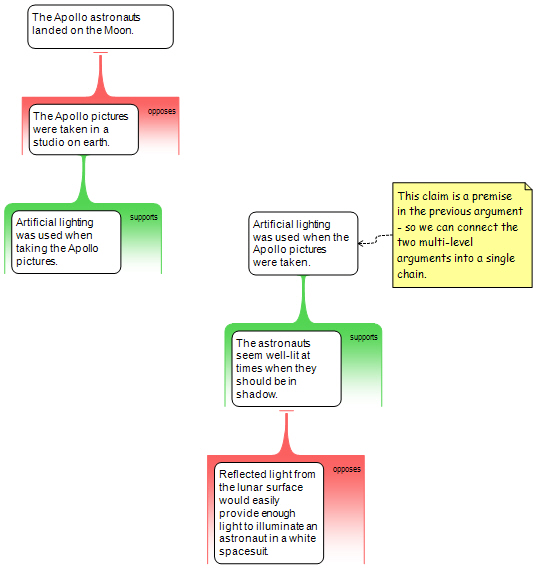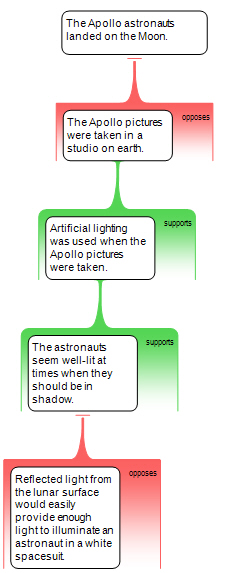
 |
|
|
|
|
| 4.6 Chains of Reasoning | |
Arguments can have more than two layers; indeed they can have many layers. Such arguments are chains of reasoning.
Here are two multi-layer arguments we saw on previous pages in this tutorial. Notice that the main contention of the second argument is a premise in the bottom-level reason of the first.

The two arguments combined into a single 4-level argument. An argument structure like this is a good example of a chain of reasoning.
 |
|
| Discussion |
Strictly speaking, even a two-layer argument is a chain of reasoning, but the term makes more sense when applied to arguments with lots of layers.
How many layers can arguments have? In principle, there is no limit. In fact it is possible to design arguments which have an infinite (no finite limit) number of layers. Mathematicians and philosophers tend to find this sort of thing particularly amusing.
In ordinary life, the number of layers you can expect to see has a lot to do with factors such as:
It is not uncommon to find arguments with six, eight or even ten layers, but arguments with fifteen or twenty layers are very rare.
| New Concepts |
A chain of reasoning is a multi-layer argument. Usually the term is applied to arguments with more than two layers.
| Glossary | Contents | |
|
Copyright © Critical Thinking Skills BV - |
|